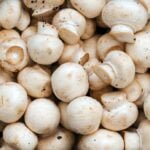what is the biological efficiency of oyster mushrooms grown on sawdust and soyhull
Title: Exploring the Biological Efficiency of Oyster Mushrooms in Sawdust and Soyhull Substrates
Introduction:
Oyster mushrooms (Pleurotus spp.), popular for their taste and health benefits, have gained popularity in both culinary and commercial spheres. Biological efficiency, which measures the yield of mushrooms obtained in relation to the substrate used for cultivation, is a critical aspect to consider. This post dives into the biological efficiency of oyster mushrooms grown on two common substrates: sawdust and soyhull.
1. Understanding Biological Efficiency:
Biological efficiency (BE) quantifies the conversion of substrate into mushroom fruit bodies. It is a measure of the yield obtained from a specific substrate, providing insights into the efficiency of mushroom cultivation methods. The calculation involves dividing the weight of harvested mushrooms by the dry weight of the substrate, multiplied by 100.
2. Cultivating Oyster Mushrooms on Sawdust:
Sawdust is a favored substrate choice for oyster mushroom cultivation due to its abundance and favorable characteristics. Oyster mushrooms can efficiently colonize and decompose sawdust, transforming it into nutritious and delicious fruit bodies. To achieve higher biological efficiency, the selection of oyster mushroom strains, moisture content, pH levels, and nutrient supplementation are crucial when using sawdust as a substrate.
3. Cultivating Oyster Mushrooms on Soyhull:
Soyhull, a byproduct of soybean processing, has gained attention as an alternative substrate for oyster mushroom cultivation. Oyster mushrooms can effectively decompose and utilize soyhull, making it a promising method to reduce waste in the soy industry. Factors such as substrate preparation, supplementation, pH control, and pasteurization methods play a role in determining the biological efficiency of oyster mushrooms grown on soyhull.
4. Comparing
Biological Efficiency in Sawdust and Soyhull:
Numerous studies have been conducted to determine the biological efficiency of oyster mushrooms cultivated on sawdust and soyhull substrates. These studies evaluate the mushroom yield and compare the results obtained from the two substrates. While specific outcomes may vary depending on environmental conditions and cultivation practices, research generally suggests that oyster mushrooms cultivated on sawdust tend to exhibit higher biological efficiency compared to those grown on soyhull.
5. Factors Influencing Biological Efficiency:
Regardless of the substrate used, several factors influence the biological efficiency of oyster mushrooms. Ensuring high-quality spawn and appropriate inoculation rates are essential. Proper management of humidity, temperature, light exposure, and ventilation also significantly impact mushroom growth and development. Monitoring the carbon-to-nitrogen ratio and implementing effective pest and disease management strategies are equally important for achieving optimum yields.
Conclusion:
Oyster mushrooms are versatile in their ability to grow on various substrates, offering flexibility to cultivators. When considering the biological efficiency of oyster mushroom cultivation, both sawdust and soyhull can be viable options. However, based on available research, sawdust appears to offer higher biological efficiency compared to soyhull. Nonetheless, by understanding the factors influencing biological efficiency and exploring different substrate options, mushroom cultivators can make informed decisions to optimize their oyster mushroom cultivation methods. This not only promotes higher yields but also contributes to sustainable mushroom production.




